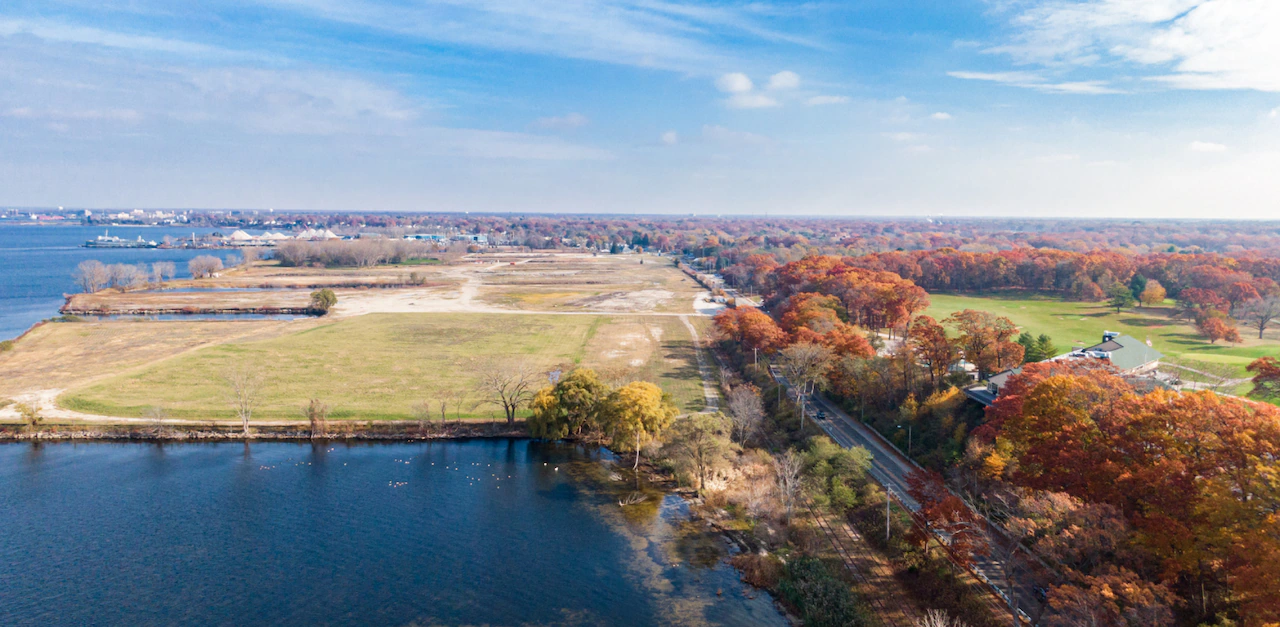
MUSKEGON, MI – The risk of explosion due to high levels of methane in the ground at a Muskegon site was a primary concern at this week’s Michigan Environment, Great Lakes and Energy (EGLE) meeting.
The state environmental agency hosted a virtual meeting Tuesday, Sept. 30 about the former S.D. Warren Sappi paper mill site, where a residential development is planned.
The more than 100-year-old industrial site, located at 2400 Lakeshore Dr. on Muskegon Lake, has seen decades of contamination and is now at an extremely high risk for fire and explosion because the built-up levels of methane in the ground.
The owner and developer of the property, Parkland Properties of Michigan, submitted a Response Activity Plan in July to EGLE to ensure “the property is safe for its planned use,” said Rory Charron, chief operating officer for Parkland Properties.
EGLE is now reviewing the plan and accepting public comment until Oct. 21. The agency will then respond with a review of the matter.
Mitigation, or decreasing the effect of the contamination, is expected to take place in the coming months, with the development of the Windward Pointe residential and recreational project starting in 2026.
The response activity plan is focused on methane vapors that are present at the former Sappi site.
That explosive concentration of methane is as high as 62.2%.
EGLE takes action when levels reach 1.5%, which is an extreme fraction of the level currently at the Muskegon site.
“These results do exceed the EGLE action level, some even exceed the upper explosive limit,” said Jason Poll, agency contact for EGLE’s remediation and redevelopment division. “We take this super seriously.”
Chemicals like methane take form in confined spaces, and specifically the porous spaces between individual grains of sand and rock underground.
When that gas meets oxygen and any type of spark or ignition, there is a risk for fire and/or explosion.
“Fire and explosion can result if methane can accumulate in a confined space like a home, or a sewer … and when an ignition source is there,” Poll said.
Ignition sources could include electrical outlets, appliances with motors, static electricity, pilot lights on a gas stove and open flames from gas grills and cigarette lighters.
The 123-acre Sappi site had paper mill and sawmill production and even the making of pianos over the years. There was a coal slip, a coal pile that burned, surge basin, wastewater canal, wastewater treatment, waste material fill area and power plant that all contributed to the chemicals that live on the now vacant site.
Of those acres, 80 consist of organic fill, or man-made land. Some of the fill areas go deeper than 20 feet.
“Leaves, trees… sludges, seaweed – all of that degrades when there’s limited oxygen underground and develops methane there,” Poll said.
EGLE is not aware of any explosion incidents on the Muskegon site, said Karen Vorce, Grand Rapids district supervisor for the EGLE remediation and redevelopment division.
“That’s something we want to look into,” Vorce said.
There are other contaminants on the site, including PFAS, that the developer and EGLE are aware of.
Scientists found an increase in PFAS presence last year in Muskegon Lake, with foam observed next to the Sappi site.
PFAS was first found on the site in 2016 and eventually 75 million gallons of impacted ground water was pumped out of the site, Poll said.
The property owner, regardless if they caused the contamination, has an obligation to make sure the pollutants are mitigated and/or remediated, depending on the circumstances, officials said.
“There are things the owners can do to make the property safer, to keep people on the property from coming in contact with the contamination,” Vorce said.
Specifically, podium-style homes are planned for the first phase of Windward Pointe, which will consist of 190 to 200 homes on the most lakefront portion of the property.
The homes are planned to be constructed above the ground to prevent the underground vapors from collecting in the home.
“This isn’t uncommon, it’s just uncommon around here,” Poll said.
This is the first solution of its type on a contaminated development site in Michigan, said Nick Swiger, technical support section manager for EGLE.
The state is taking guidance from Los Angeles and North Carolina who have dealt with similar projects due to methane contamination.
With the developer’s mitigation efforts through home and construction design, Poll said the explosive risk is expected to decrease with the addition of oxygen.
He said he wasn’t sure about the level of methane.
“Methane generally occurring in there is probably stabilized at this point,” Poll said. “It’s impossible to say whether it would increase or decrease in any human scale of time … We just can’t predict it.”
There is also a health risk for dust released during construction, Poll said, adding that the developer will need to make sure the dust is concealed during construction.
The property is currently fenced in. Ponds and basins have been filled in. There are some groundwater monitoring wells and soil gas wells on site for EGLE to use for sampling.
The methane concentration is throughout the site but is especially high on the northeastern portion, Poll said.
He added that wintertime poses a higher potential for vapor intrusion because of frozen soil. Adding more elements to that buildup of methane presents a fire risk.
“If there’s homes above a vapor source, those homes can have a chimney effect of sucking vapors out of the ground due to the heating of the home,” Poll said.
He added that the developer would need to ensure that snow piles would not be plowed up against homes, posing a potential risk for methane accumulation.
If oxygen is not added, the methane can build up in confined spaces and can also spread to groundwater which feeds into Muskegon Lake.
The podium-style homes will need to be “maintained forever,” Jason said. There will be meters on site that will need regular checks and calibration.
The developer can also install vapor dams, or blockages along utilities in the soils.
Every structure constructed on site will be evaluated by EGLE and will have its own unique design to cater to the contamination risk.
Poll stressed that the plan is not remediation, or removing the contaminants, but mitigation – “to minimize the effect” on contaminants on site.
“It’s possible that overtime, over many, many decades, the sources of methane could eventually be degraded to a point where they’re not making methane anymore, but that’s not within a human lifetime,” Poll said.
The rest of the development plan includes roads, infrastructure, lake access and spaces for public and recreational use, including pocket parks and trails.
“For nearly a century, the paper mill was an important part of the Muskegon community, and this property has an opportunity to once again become an asset for Muskegon,” said Jon Rooks,
The property fronting Muskegon Lake is across the street from the Muskegon Country Club and is along Lakeshore Drive, between downtown Muskegon and Pere Marquette Beach on Lake Michigan.
The city of Muskegon approved a Planned Unit Development (PUD) with Parkland Properties in 2023.
“While there has been minimal ‘construction activity’ at the site for the last two years, we have been working diligently on developing plans to assure that the proposed redevelopment is safe and performing extensive testing throughout the site to better understand and advise our development plans,” Charron said.
There were 55 people who attended the virtual meeting Tuesday evening.



